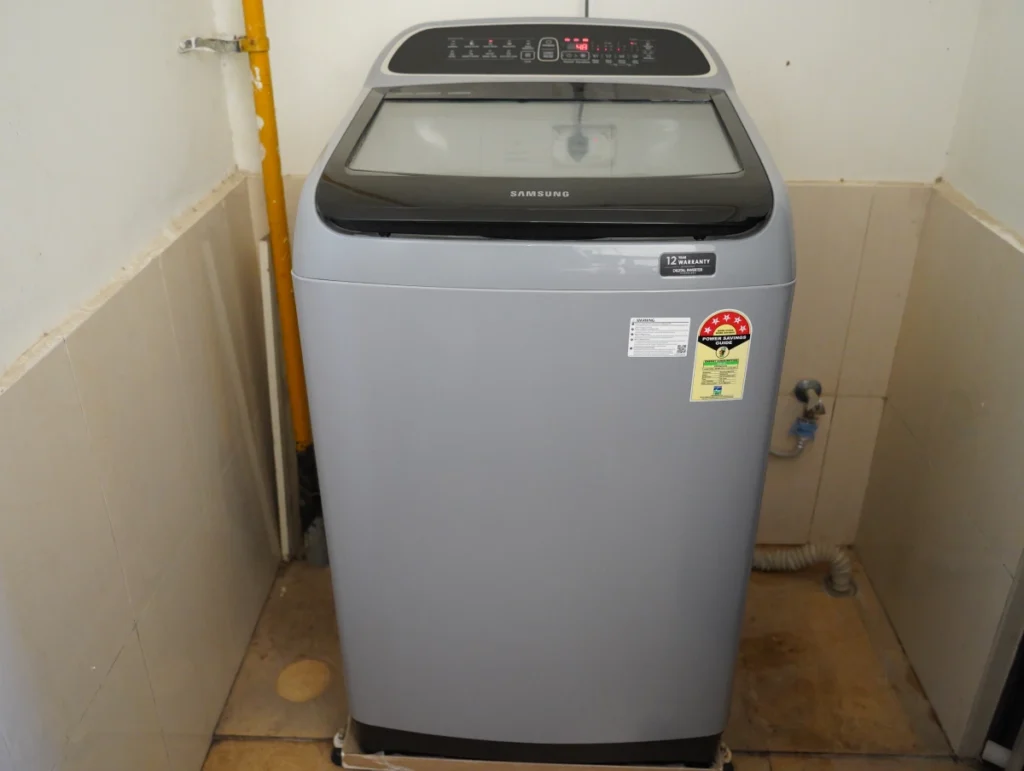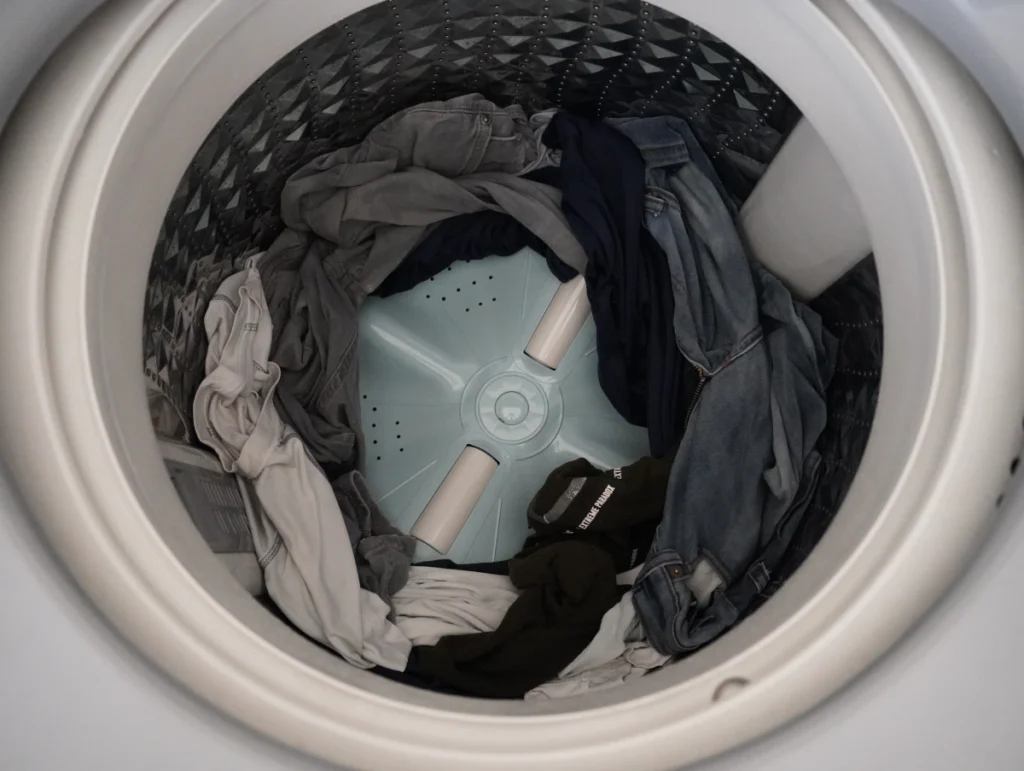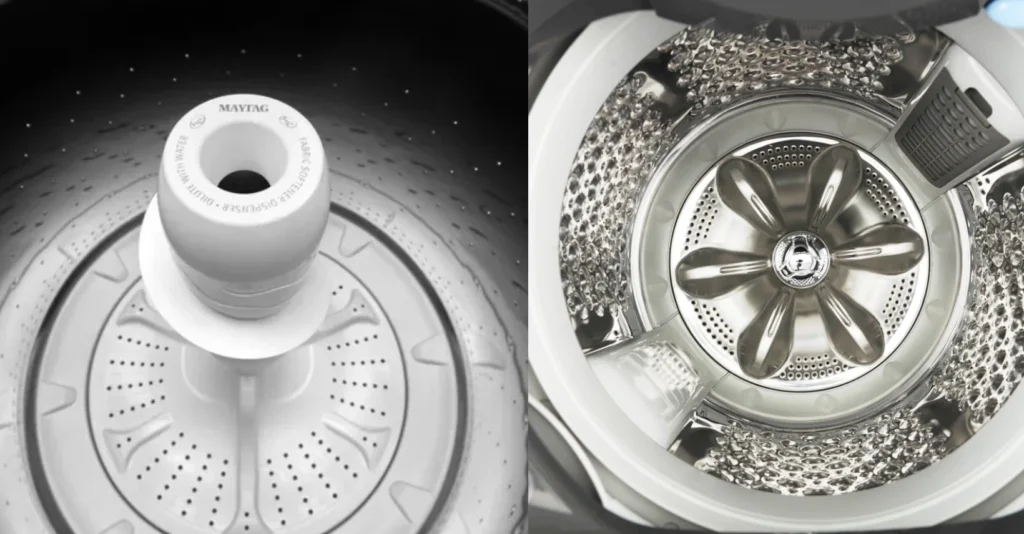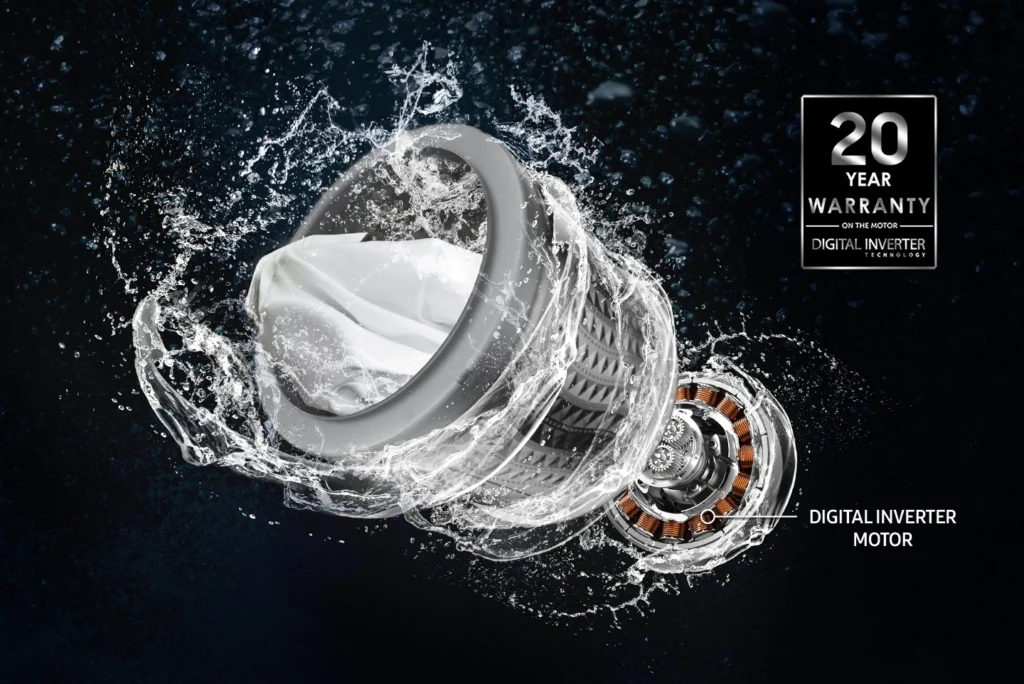The debate between front-loading and top-loading machines will continue as to which of the two is the better option. You have different kinds of people, and each person has their preferences. This article compares the features of front-loading and top-loading washing machines from the user’s viewpoint to help you decide on the right option.
| Comparison Parameters | Front-loading machines | Top-loading machines |
|---|---|---|
| Ease of Use | Requires bending but can be placed on pedestals | More accessible for loading clothes |
| Cleaning Efficiency | Better, especially for delicate clothes | Agitators clean well but can be rough on fabrics |
| Water Consumption | Consumes up to 40% less water | Consumes more water |
| Washing Speed | More wash programs but longer cycles | Faster wash cycles |
| Power Consumption | More energy-efficient in the long run | Consumes more energy per load |
| Technology | More advanced features | Fewer technological advancements |
| Noise Levels | Slightly lower with Direct Drive models | Comparable noise levels |
| Maintenance | Requires frequent cleaning due to mold | Less maintenance required |
| Pricing | Generally more expensive | Less expensive |
| Installation | Occupies less space and can be stacked | Requires more space |
What does the user look for in a washing machine?
If you look at the washing machine specifications, you can find confusing terms like Eco wash, Bubble wash, Aqua Energie, etc. These terms do not matter much to the average user because manufacturers use such terms for marketing purposes. Individual washing preferences take precedence over all matters when it comes to selecting washing machines.
As a user, you will be more concerned with power and water efficiency, time taken for washing, the convenience of use, washing efficiency, ease of loading, costs, and maintenance. Therefore, we shall concentrate on these aspects to help you decide the better option between a front-load and a top-load washing machine.
Ease of Use
Compared to the front-loading washing machines, the top-loaders are generally at a comfortable height. You do not have to bend down and go on your haunches to load clothes into the machine. Hence, people with back problems prefer the top-loaders.

However, top-loading machines also require you to bend your back when removing the clothes from the machine. Today, you have front-loading washing machines placed over a laundry pedestal that increases their overall height, letting you place and remove clothes without bending your back. The pedestal also serves as an ideal location to store your detergents and other necessary items.
Secondly, there is a question of adding or removing clothes during a washing cycle. Top-loading washing machines can be stopped anytime to enable you to add or remove clothes. The door does not have any lock. Hence, it is easy to open and convenient to add/remove clothes whenever you want.

Some front-loading machines also offer this option but only early in the wash cycle. As the cycle progresses, it is not possible to remove or add clothes due to safety mechanisms.
Adding detergents mid-cycle is also easier in top-loading washing machines.
Inference: When it comes to ease of use, the top-loading machines have a slight edge over their front-loading counterparts.
Cleaning Efficiency
Front-loading washing machines are better at cleaning compared to top-loading machines because they offer more advanced washing motions. Brands like LG, Samsung, Bosch, IFB, and Panasonic offer 14 to 30 wash programs. However, the average individual does not use more than six to eight programs. Most of the other wash programs have fancy names.
Front-loading machines are convenient because you can wash heavy clothes like bed sheets, cushions, etc., more comfortably than a top-loading model.

Top-load washing machines either come equipped with an agitator or an impeller. Machines with an agitator wash better due to their unique agitating action, which mimics a hand wash. However, clothes can get entangled in an agitator, which may cause wear and tear over time.
Machines with an impeller come with a cone or disc placed at the bottom of the drum that spins/rotates to rub your clothes against each other to remove dirt. This design ensures more space and also prevents clothes from entangling.
While agitators may not be as gentle on the clothes as impellers, they deliver a better cleaning performance.
Inference: The top-loading machines can be a bit rough on clothes. Hence, the front-loader is a better option when it comes to cleaning efficiency.
Water Efficiency
Top-loading washing machines, by design, work on the principle of gravity and consume more water. The clothes must be fully immersed in water to ensure a thorough wash. On the other hand, front-loading machines consume significantly less water due to their unique drum design and rotation.

Studies have shown that front-loading machines consume up to 40% less water than top-loaders.
Inference: Front-loading washing machines are better than top-loaders in water efficiency.
Washing Speed
Compared to front-loading washing machines, top-loaders generally have shorter wash cycles. Features like agitators help remove stubborn dirt quickly compared to machines with impellers. While front-loaders have more wash programs, top-loading machines wash faster in standard cycles.
However, when it comes to spin cycles, front-loaders have an edge. They spin at higher speeds (typically 1200 to 1400 rpm) than top-loaders (650 to 800 rpm), removing more water and reducing drying time.
Inference: While top-loading machines can wash faster, front-loaders spin faster with a higher rpm speed.
Power Efficiency
Contrary to common belief, front-loading washing machines are generally more power-efficient than top-loaders. They use less water and detergent, require lower overall energy per cycle, and have better spin speeds that reduce drying energy consumption.

While some top-loading models may show lower wattage consumption per wash cycle, the overall efficiency of front-loaders including water heating, washing, and spinning tends to be better.
Inference: Front-loading machines are more energy-efficient in the long run, especially when considering hot water usage and drying time.
Technology
Technology-wise, front-loaders offer more features, such as inverter motors, Direct Drive technology, steam wash, and AI-based wash cycles. While top-loaders have some of these features, front-loaders typically integrate them more effectively.

Both types offer Wi-Fi connectivity, Smart Diagnosis, and customizable washing programs, but front-loaders tend to be more advanced.
Inference: Front-loaders have a slight technological edge over top-loaders.
Noise Levels
Noise levels are generally comparable for both types, with 50–60 dB during washing and 70–75 dB during spinning. Direct Drive technology in some front-loaders minimizes vibration and noise, making them quieter than traditional belt-driven machines.
Inference: Both top-loading and front-loading machines deliver good performance in noise reduction.
Maintenance
Front-loaders require more maintenance due to potential mold buildup on the door gaskets, which retain moisture. Regular cleaning and drum-clean cycles help mitigate this issue.
Top-loaders have fewer maintenance concerns and do not suffer from mold-related issues as much.
Inference: Top-loading machines require less maintenance than front-loaders.
Pricing
Front-loaders are generally more expensive than top-loaders due to their advanced technology and features. However, top-loaders with inverter motors and higher-end features can also be costly.
Inference: Front-loaders are more expensive than top-loaders.
Installation
Front-loaders occupy less space and can be stacked with a dryer, making them ideal for small laundry rooms. They can also be mounted on pedestals for easier access.
Inference: Front-loaders offer better installation flexibility.
Which is the better option – Top-loading or Front-loading washing machine?
The choice depends on individual needs:
- If budget and ease of use are priorities, top-loading machines are a good choice.
- If water efficiency, better cleaning, and advanced technology are priorities, front-loading machines are the better option.
